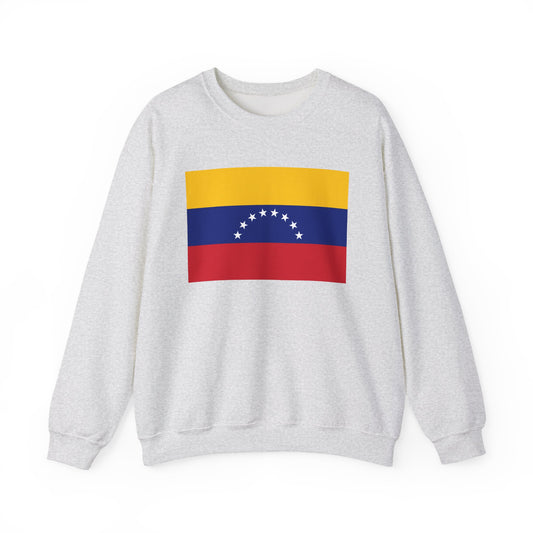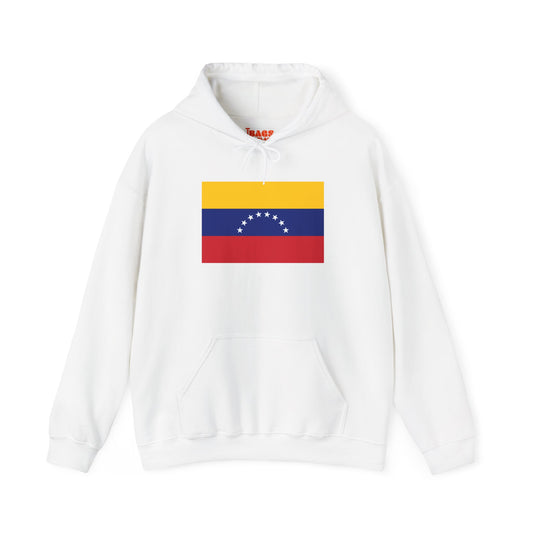-
Venezuela Pillow
Regular price $22.65 USDRegular priceUnit price / per -
Venezuela Flag Sweatshirt
Regular price $34.15 USDRegular priceUnit price / per -
Venezuela Sweatshirt
Regular price $34.15 USDRegular priceUnit price / per -
Venezuela Backpack
Regular price $59.79 USDRegular priceUnit price / per -
Venezuela Leather Patch Hat
Regular price $18.85 USDRegular priceUnit price / per -
Venezuela Mug
Regular price $11.65 USDRegular priceUnit price / per -
Venezuela Trucker Cap
Regular price $14.90 USDRegular priceUnit price / per -
Venezuela Hoodies
Regular price $34.40 USDRegular priceUnit price / per -
Venezuela T-shirts
Regular price $22.79 USDRegular priceUnit price / per -
Venezuela Flag Hoodies
Regular price $34.40 USDRegular priceUnit price / per -
Venezuela Flag on T-shirt
Regular price $22.79 USDRegular priceUnit price / per
Collection: Venezuela
With its vibrant colors and unique design, the Venezuela flag has a rich history and symbolism that reflects the country's heritage and values. We will delve into the intriguing tale of the Venezuela flag, exploring its design, historical context, symbolism, current relevance, and additional interesting facts.
Overview of the Venezuela Flag Design and Colors

The Venezuela flag is a striking representation of the nation's identity, comprised of three equally sized horizontal bands of yellow, blue, and red. At the heart of the blue stripe lies a circle of eight white stars, an element that has evolved in number through various iterations of the flag but remains a constant symbol of unity and independence. The top yellow stripe is a bright canvas symbolizing the country's vast wealth, not only in terms of its natural resources but also its culture and history.
The middle blue band reflects the significance of the waters that separate Venezuela from colonial powers and connect it with the wider world, embodying freedom and sovereignty. Lastly, the red stripe at the bottom of the flag is a powerful reminder of the courage and sacrifice of those who laid down their lives in the struggle for Venezuela's independence. This vibrant tricolor design, full of meaning, encapsulates the spirit of the Venezuelan people and their enduring quest for liberty and prosperity.
Historical Context of the Venezuela Flag
The journey of the Venezuela flag through history is a testament to the nation’s evolving identity and political landscape. Initially introduced by the revolutionary Francisco de Miranda in 1806, the flag's design symbolized liberation from Spanish rule, featuring the distinctive tricolor scheme that persists today. Over the years, the flag has seen numerous revisions, reflecting changes in political regimes and national sentiment. The most recent adjustment occurred in 2006 under the presidency of Hugo Chávez, who added an eighth star to honor the province of Guayana, aligning with Simon Bolivar's original 19th-century decree.
This addition underscored the government’s attempt to connect with the country's liberation heritage and emphasize unity among its regions. Each alteration to the flag's design over the years mirrors the shifts in Venezuela's internal and external affiliations, marking significant moments in the country's journey from a colonial past to an independent future. While sometimes contentious, these changes underscore the flag's central role in expressing the ideals and struggles of the Venezuelan people throughout history.
Symbolism Behind the Venezuela Flag

The symbolism of the Venezuela flag is deeply entrenched in the nation’s quest for independence and its rich natural heritage. The trio of colors vividly illustrates pivotal elements of Venezuela's identity and history. The golden yellow band across the top symbolizes the country's abundant riches. This includes the literal wealth of its resources and the cultural and historical bounty that Venezuela boasts. The blue strip, sandwiched in the middle, serves as a representation of the vital waters that surround the nation. These bodies of water have played a crucial role in Venezuela's history, symbolizing both the barrier from colonial oppression and the link to the rest of the world, highlighting themes of sovereignty and freedom. The red stripe, grounding the flag at the bottom, pays homage to the courage and the bloodshed of the nation's forebearers in the arduous journey toward independence.
Centered within the blue, the circle of eight white stars stands as a unifying symbol, each star reflecting one of the original provinces that supported the fight for freedom. This constellation of stars evokes the unity of the country's regions and honors historical commitments to national integrity and liberty, further reinforcing the flag's embodiment of Venezuela's indomitable spirit and the enduring struggle for its values.
Current Relevance of the Venezuela Flag
Today, the Venezuela flag remains a powerful emblem, woven into the fabric of daily life and prominently featured in national celebrations and solemn commemorations. Its role extends beyond mere representation of the nation, serving as a rallying symbol for the Venezuelan people during times of unity and division. The flag's visibility in various contexts, from the fluttering banners at international sports competitions to the solemn draping over the coffins of national heroes, underscores its importance in expressing national identity and pride. Amidst ongoing political challenges and social movements within Venezuela, the flag has also emerged as a potent symbol in demonstrations and protests. It encapsulates the aspirations, struggles, and resilience of Venezuelans, transcending its historical roots to become a beacon of hope and a reminder of the enduring spirit of the country's pursuit of justice and democracy. The flag's significance in contemporary Venezuela is a testament to its ability to embody the collective sentiment of the nation, making it an enduring symbol of the country's past, present, and future aspirations.
Additional Facts About the Venezuela Flag
The Venezuela flag, steeped in history and symbolism, carries a few lesser-known facts and protocols that further enrich its narrative. For instance, when displayed alongside other flags, the Venezuela flag takes a position of honor to the left of all other flags. This protocol underscores the sovereignty and pride of the nation on the international stage. Additionally, there is a specific flag known as the "Seven Stars Flag" that is still used by opposition groups and individuals as a symbol of resistance and a nod to historical versions of the flag before the addition of the eighth star in 2006. This usage highlights the flag's role in ongoing political discourse within the country.
Moreover, the national anthem is played during the raising and lowering of the flag in public institutions, reinforcing the flag’s significance in fostering national unity and pride. These unique aspects of the Venezuela flag's display and handling and its adoption by various factions for political expression underscore the deep connection between the flag and Venezuela's national identity and ongoing history.






















